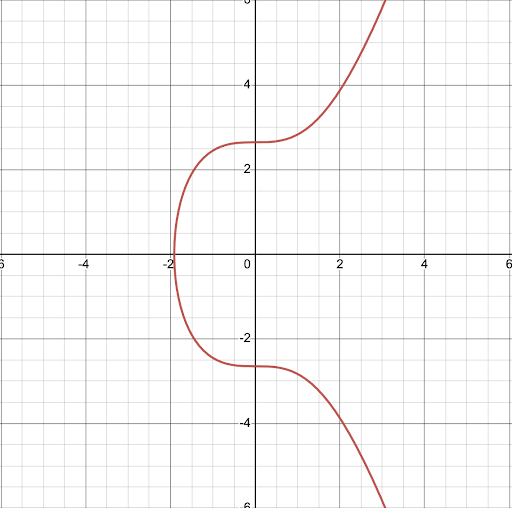Without elliptic curves, Bitcoin would be impossible. Let’s explore the fundamental concept of elliptic curves and learn how public-key cryptography works as a security foundation for bitcoin.
Table of Contents
Introduction
Bitcoin uses a special math trick called “elliptic curve cryptography” to keep your money safe. It’s like having an ultra-secure lock and key system for your digital wallet.
Elliptic curve cryptography (ECC) is the foundation of Bitcoin’s security system. Without this mathematical concept, Bitcoin as we know it would be impossible. This guide explains how these elegant mathematical curves enable the secure, decentralized transactions that power the Bitcoin network.

What Are Elliptic Curves?
An elliptic curve is a mathematical curve defined by an equation. In Bitcoin’s case, it uses a specific curve called secp256k1, which is defined by the equation:
y² = x³ + 7
When plotted, this creates a smooth, symmetrical curve that has special properties that make it ideal for cryptographic applications.
The Basics of Public-Key Cryptography
Bitcoin uses elliptic curves to implement public-key cryptography, which satisfies two critical conditions:
- It is computationally impossible to derive a private key from its public key
- It is possible to prove ownership of a private/public key pair without revealing any information about the private key
The Discrete Log Problem: A One-Way Function
The security of elliptic curve cryptography relies on what’s known as the Discrete Log Problem. Think of it like making a smoothie:
- Making a smoothie (calculating a public key from a private key) is easy
- Reversing the process to get back the original ingredients (deriving the private key from a public key) is practically impossible
This one-way mathematical function creates a “trapdoor” that ensures your private key remains secure, even when the corresponding public key is shared openly on the blockchain.
How Bitcoin Generates Key Pairs
The process of generating Bitcoin keys using the secp256k1 curve works as follows:
- Generate a random number “k” (your private key)
- Use a predefined point on the curve called the “generator point” (G)
- Multiply k × G to produce a new point “P” on the curve (your public key)
Due to the properties of elliptic curves, there’s no efficient way to calculate k if you only know P and G.
The Scale of Security
The security of this system is based on the astronomical number of possible private keys: 2^256 combinations. This number is larger than the number of atoms in the observable universe, making it statistically impossible to guess a private key through brute force.
Advantages of Elliptic Curves in Bitcoin
Bitcoin uses elliptic curve cryptography rather than other encryption methods like RSA because:
- It provides the same level of security with much smaller key sizes
- It requires less computational power to process
- It generates smaller data footprints, which is essential for a peer-to-peer network that needs to transmit compact information
Practical Applications in Bitcoin
In Bitcoin, elliptic curve cryptography is used for:
- Generating private and public key pairs for wallets
- Creating digital signatures to authorize transactions
- Verifying that transactions were authorized by the rightful owner
- Securing the network against unauthorized access and double-spending
Summary
Elliptic curve cryptography is the mathematical backbone of Bitcoin’s security model. By leveraging the one-way nature of the Discrete Log Problem, Bitcoin creates a system where:
- Private keys can generate public keys
- Public keys cannot be used to determine private keys
- Ownership can be proven without revealing private keys
This elegant application of mathematics enables the trustless, decentralized nature of Bitcoin that has revolutionized our concept of digital value transfer.
















